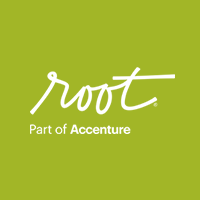Tips to Making your Sustainability Story Stick
Have you ever seen the movie WALL-E? If not, you definitely should. I was watching it again recently (as I sometimes do on any given Saturday evening), and it struck me that not only is it an entertaining robot love story, but it is a powerful sustainability story that really sticks with me.
I was at lunch a few weeks ago with two clients who work in global packaging solutions. We got to talking about how they are doing great work in environmental sustainability, but many employees and customers alike don’t have any idea that they’re doing it (despite a robust annual sustainability report).
So the question arose: How do you tell a positive sustainability story that will capture the attention and loyalty of your current and future employees, and in turn, your customers? How do you tell an honest sustainability story that sticks? (Don’t worry; we’ll get back to WALL-E soon.)
Using Storytelling to Tell Your Sustainability Story Successfully
Many companies are doing very cool things in sustainability, and if you do a bit of searching you will find some powerful storytelling approaches that are working really well. Here are just a few I’ve come across:
- The Ad Council and Keep America Beautiful have partnered with several companies (including Alcoa Foundation, Waste Management, and Unilever, among others) to tell the story of where our stuff goes, from the perspective of a shampoo bottle, a cereal box, and an aluminum can in their “I want to be recycled” campaign.
- PepsiCo highlights its Performance with Purpose plan by answering the questions of #howwillwe grow sustainably, thrive in a changing environment, and create opportunity? via a powerful collection of visuals, text, and personal stories.
- In their Footprint Chronicles, Patagonia provides an honest account of the supply chain issues they struggle with as a business, with a mission statement to: “Build the best product, cause no unnecessary harm, use business to inspire and implement solutions to the environmental crisis.”
These examples show how a brand can use storytelling to tell their sustainability story successfully. But we all need to get better about telling our success stories – it’s the most effective way to engage employees, customers, and other businesses in building solutions together.
Now, there is already a lot of content available about the value of storytelling in business, so I won’t rehash this topic here. A quick Google search will provide some great advice on the topic, like this TED Talk by Andrew Stanton (writer of Toy Story and WALL-E), as well as more specific resources on crafting a good sustainability story (like this BSR blog). The main takeaway I have to share is that people talk in stories, remember stories, and connect to stories on an emotional level.
Four Reasons Why Storytelling is So Powerful
Ok, now back to WALL-E for a few key things to remember to help ensure you tell your sustainability story successfully (if you haven’t seen the film, there may be a few spoilers here):
- Good stories invite curiosity: WALL-E depicts a future where humans have abandoned a garbage-laden Earth because it can no longer support life. This world is mysterious and visually compelling. It begs viewers to ask the question: “What happened here?” And you want to keep watching to find out.
- Good stories have a protagonist: WALL-E is an adorable robot. Clearly, we want him to succeed. By seeing the world through WALL-E’s eyes, we see the barrenness of the world humans have destroyed, resulting in an emotive response. It’s impossible not to be disgusted at the state of this future dystopia.
- Good stories have a conflict and a resolution: The central conflict of WALL-E (from a sustainability perspective at least) is that humans believed they could never return to the Earth they had destroyed, and have consequently become complacent and blind in their new, depressing, a-little-too-real existence in space. The climax occurs as WALL-E and friends fight to save the plant that proves the resilience of the natural world, and resolves in hope that humans can return to Earth to “live” rather than just “exist.”
- Good stories create meaning: A good story does not hit you over the head with what you should or should not do. It asks you to bring your own experiences and emotions into the mix, and come to your own conclusions. While some may see WALL-E as a simple children’s story, I walk away from WALL-E feeling both a sense of urgency about the current state of the world, and a sense of hope that we will be able to tap into the resilience of nature and continue to live full lives.
Storytelling is something we are passionate about at Root, whether through a Learning Map® experience, a film, or a digital simulation. Check out the Seven Steps to Telling Stories Your People Will Love for how we approach storytelling.
What do you think makes for a good sustainability story? Share your examples with me at jkiepura@rootinc.com.






